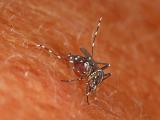Sep 20, 2012
USDA moves to make E coli testing of beef trim more risk-based
The US Department of Agriculture (USDA) yesterday announced changes in its testing program for Escherichia coli O157:H7 in beef trimmings (trim), including increasing sampling at facilities that have more problems controlling the pathogen. The USDA's Food Safety and Inspection Service (FSIS) devised the plans in response to recommendations made in 2010 by the USDA Office of the Inspector General. A recent FSIS analysis showed that small facilities have a higher rate of E coli O157 contamination in beef trim than large and medium-size facilities, according to the agency's announcement yesterday in the Federal Register. In addition, the FSIS has determined that beef trim is more likely to test positive in the "high-prevalence season" of May through October than in other months, the notice says. The agency said it has already adjusted its testing program to increase sampling at facilities with higher risk factors and from May through October, but because of resource constraints, sampling during other months will have to be reduced. The FSIS also announced plans to make ongoing statistical prevalence estimates for E coli O157 in beef trim. In addition, next year the agency will conduct a baseline survey of the prevalence of E coli O157, other pathogenic E coli strains, and Salmonella on beef carcasses before evisceration and antimicrobial interventions. The FSIS is inviting public comments on its plans.
Sep 19 FSIS Federal Register notice
Jan 20 CIDRAP News story on USDA plan
Coalition urges USDA to drop plan for changes in poultry inspections
A coalition of 23 consumer, labor, health, and civil rights groups called on the USDA today to withdraw its proposal to transfer much of the work of inspecting poultry carcasses to processing companies. The group asserts that the plan was developed without adequate public input and would allow processors to increase their production line speeds to unsafe levels, said the Consumer Federation of America (CFA), a coalition member. The USDA has said the plan will allow its inspectors to focus more attention on sanitary conditions and interventions, thereby improving food safety and saving money for taxpayers and poultry companies. But the coalition, including the Center for Science in the Public Interest, the Government Accountability Project, Public Citizen, and others, said the plan's proposed increase in production line speeds to 175 birds per minute would allow too little time for proper inspection and lead to repetitive motion injuries. The group also argues that the plan changes the standard for accepting or rejecting birds and does not require training of private employees who would inspect carcasses. Further, the coalition complained that the plan does not set a standard for testing of poultry and instead leaves each plant to develop its own testing protocol. In addition to the 23 organizations, the coalition statement was signed by 16 academicians in various health and legal specialties.
Sep 20 CFA press release
Vaccine-derived polio cases continue in some countries
Vaccine-derived polio cases are rare but continue to happen in a handful of countries, scientists from the World Health Organization and the US Centers for Disease Control and Prevention reported today. Writing in Morbidity and Mortality Weekly Report (MMWR) about the period from April 2011 to June 2012, investigators said that outbreaks of circulating vaccine-derived poliovirus (VDPV) infections appear to have stopped in Afghanistan, Ethiopia, and India, and a large outbreak in Nigeria appears to have been declined sharply. However, outbreaks continue in the Democratic Republic of the Congo and Somalia, new outbreaks were detected in Mozambique and Yemen, and genetic evidence indicated renewed VDPV circulation in Madagascar. The researchers also report that 12 new prolonged immunodeficiency-related VDPV infections were detected, with increasing numbers found in developing and middle-income countries. About 85% of VDPVs detected were poliovirus type 2.
Sep 21 MMWR report
Report: Recent Cambodian chikungunya outbreak had 73% attack rate
An outbreak of chikungunya in a Cambodian village in February and March started sickening patients about 3 weeks after unusually heavy rains, with 44.7% of the population showing evidence of infection, an international group of researchers reported today in MMWR. The epidemiologic and seroprevalence study is one of the few to detail reemergence of chikungunya in Asia, which involves the East/South/South African strain that has been causing outbreaks in the region since 2006. To profile the outbreak in the Kampong Speu province, the research group surveyed village residents and took blood samples, including venous samples from febrile patients. The study, which occurred as the outbreak was winding down, revealed that the clinical attack rate was 73.4% and that 5.3% of the population was asymptomatic. The epidemic lasted about 3 weeks. In a few instances, the investigators found evidence of other infections, such as dengue and Japanese encephalitis. No Aedes albopictus mosquitoes, which have been linked to other outbreaks, were found in the area. Researchers wrote that the seroprevalence finding was similar to some other chikungunya studies.
Sep 21 MMWR report













